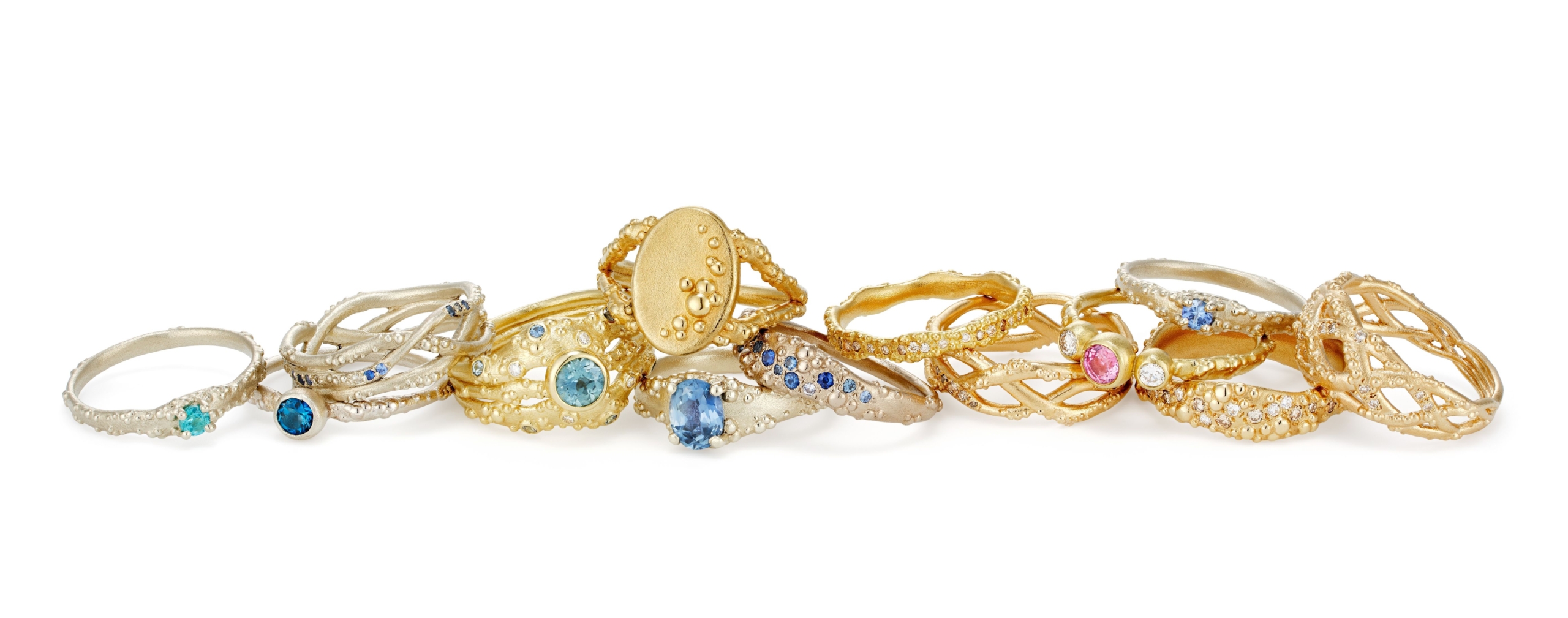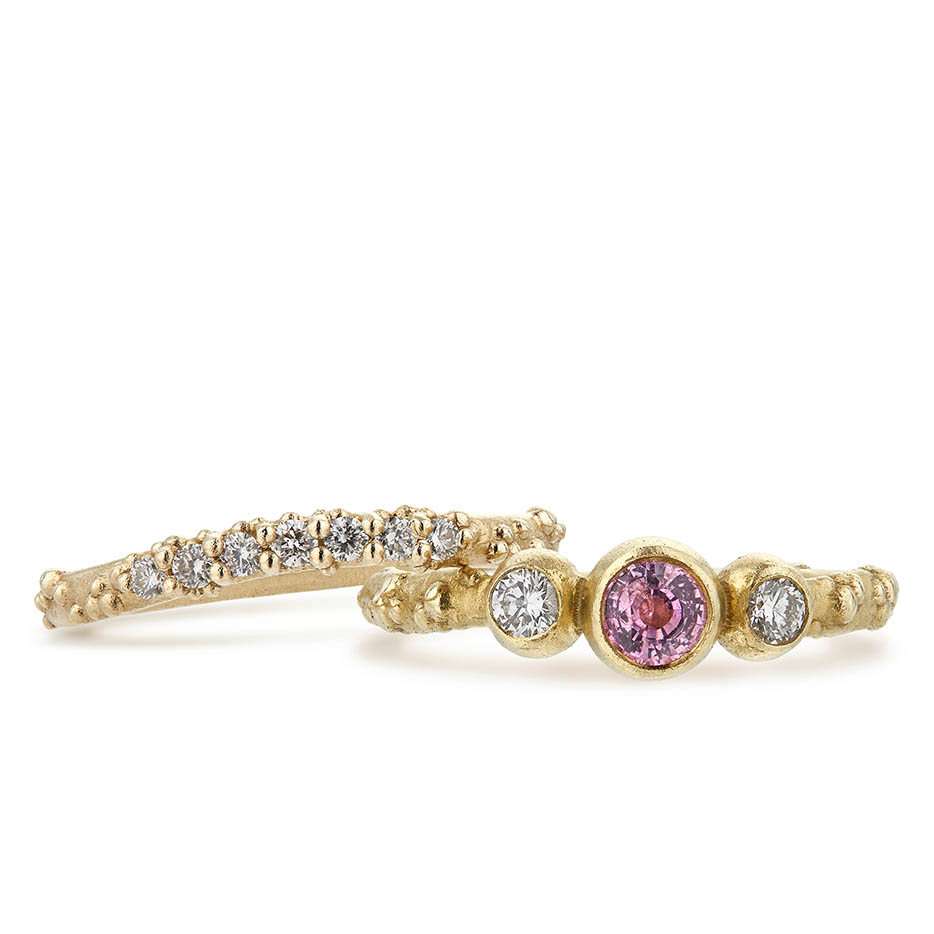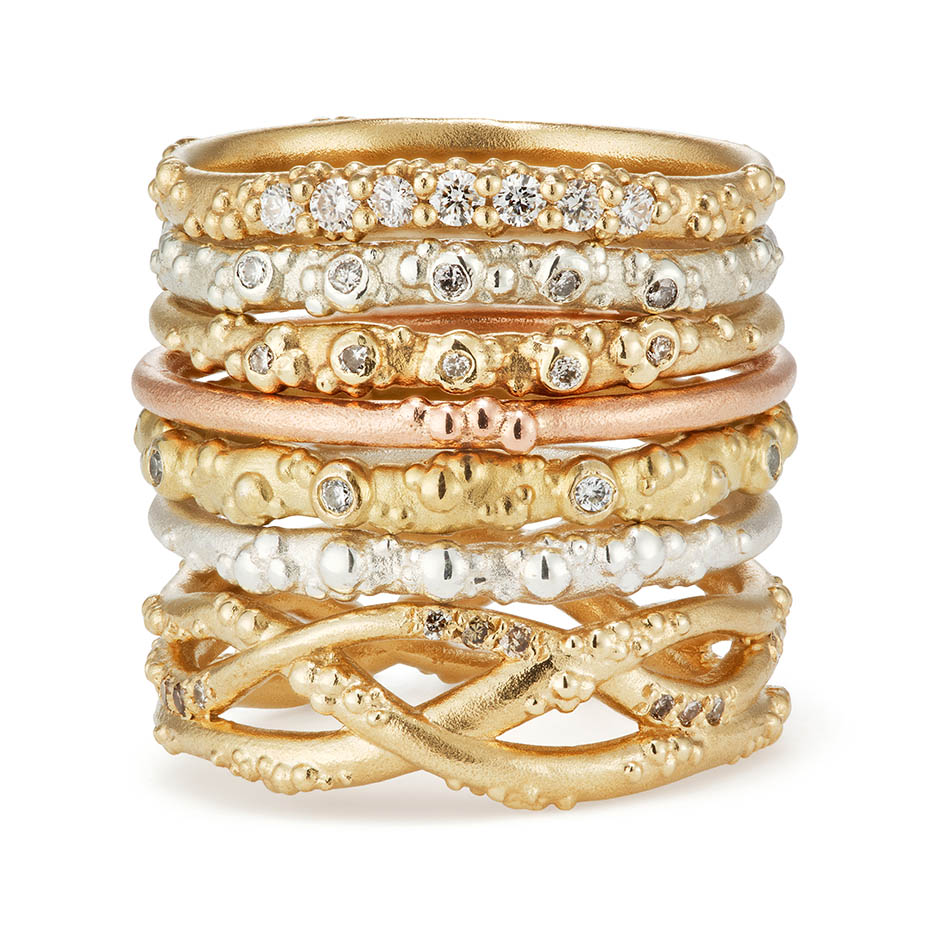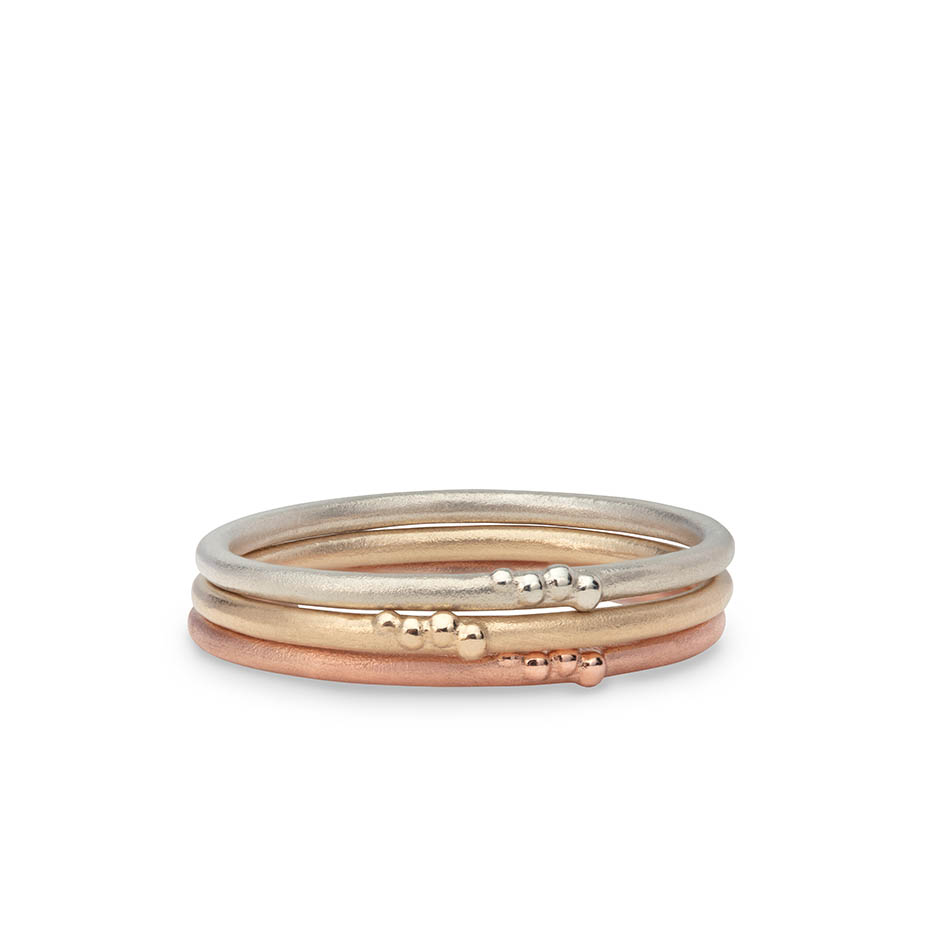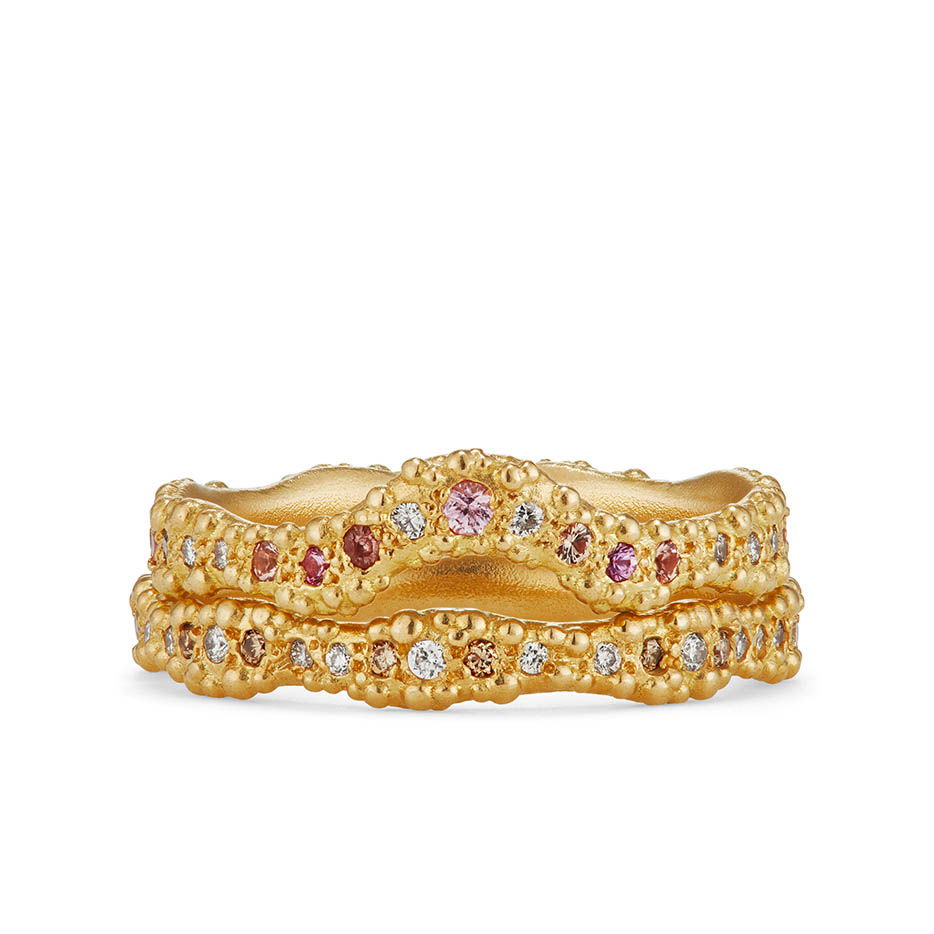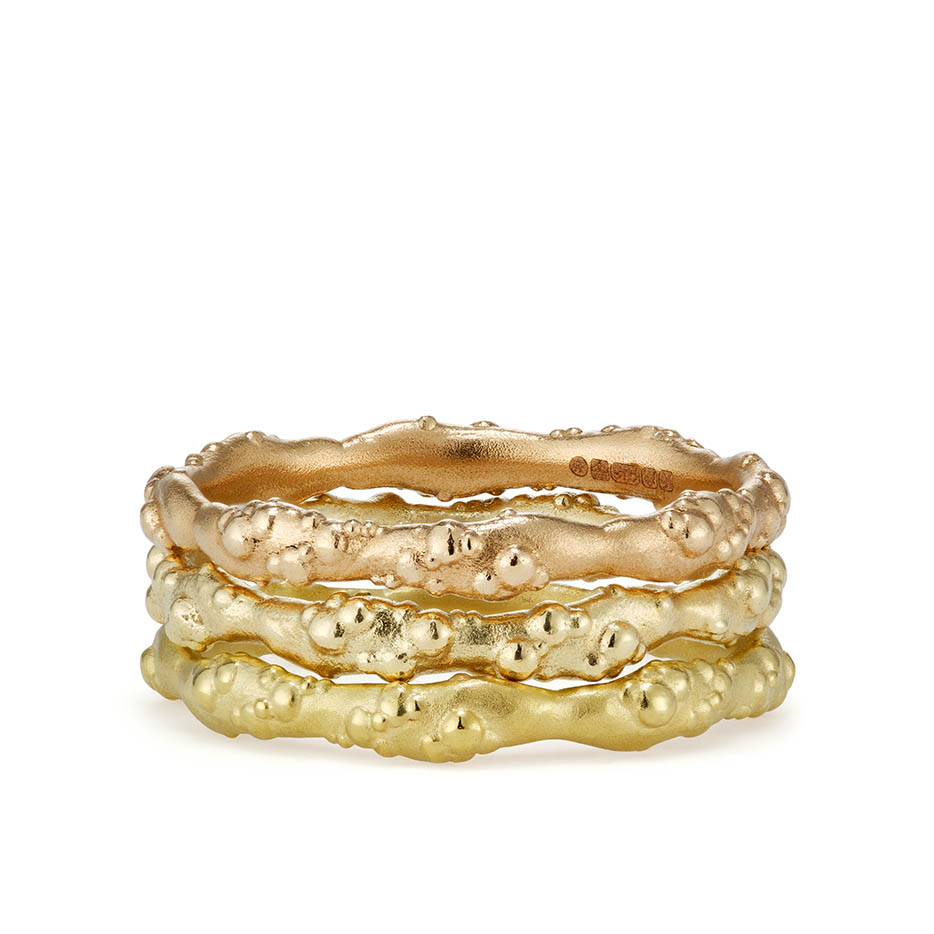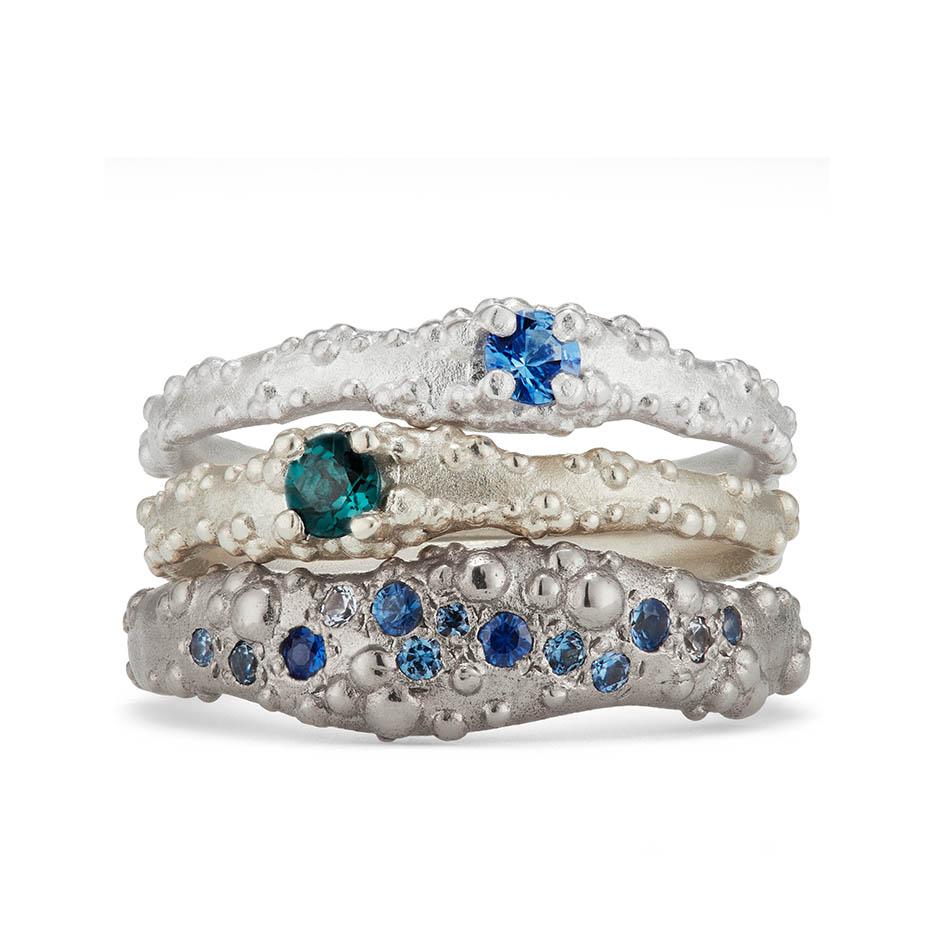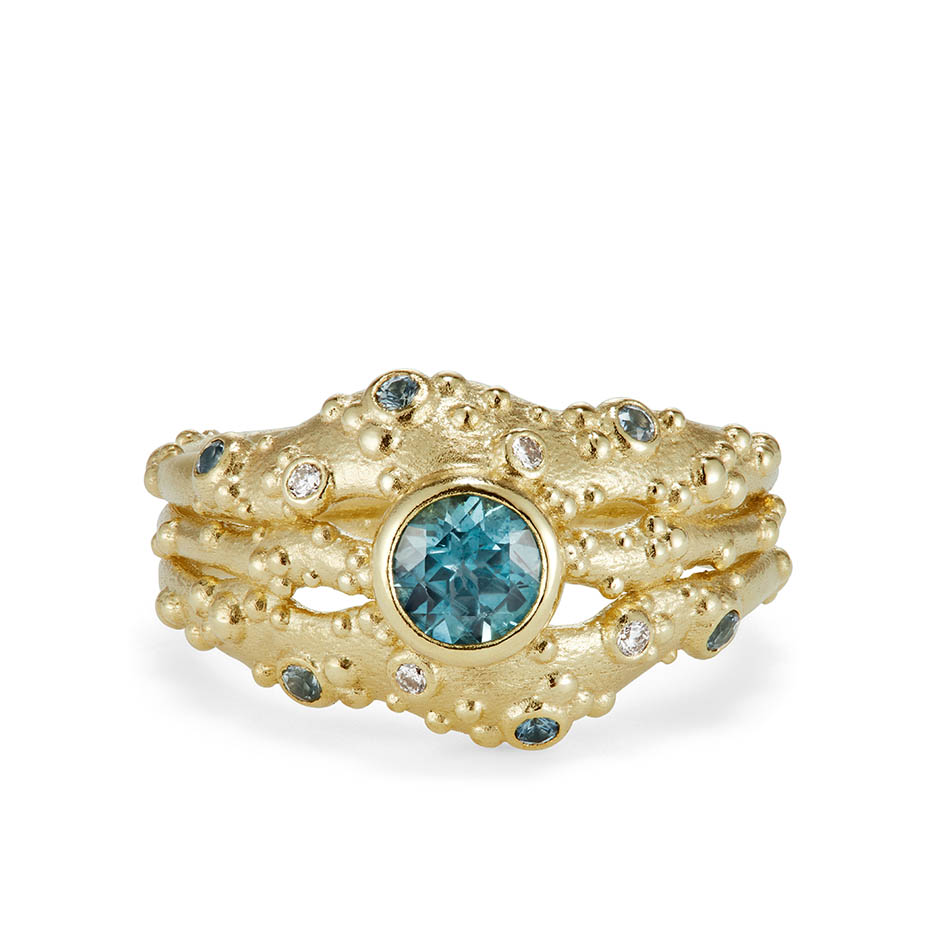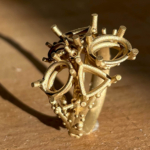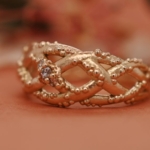14ct vs 18ct gold (and 9ct too!) – How to pick the right carat for you
Ever wondered what the difference is between 9ct, 14ct and 18ct gold? Or wondered what that even means? Understanding gold caratage is the first step to making a smart jewellery purchase, so let me explain, so you can make the right choice for you.
First things first, caratage measures gold’s purity. Pure gold is 24ct, meaning it contains 99.99% gold. You can never really get to 100% as there’s always a little spec of dust somewhere. The catch to fine gold is that 24ct gold is very soft, which makes it prone to scratches, dents and deformations. To improve durability, gold is mixed with other metals, forming an alloy.
The most common alloys in the UK are 9ct and 18ct gold, although 14ct is rapidly gaining popularity. Especially with the rising cost of gold in the last year!
So what exactly is the difference?
Gold purity: 9ct vs 14ct vs 18ct
- 9ct gold contains 37.5% fine gold and 62.5% other metals
- 14ct gold contains 58.5% fine gold and 41.5% other metals
- 18ct gold contains 75% fine gold and 25% other metals
The mixture of metals influences both colour and durability. 18ct yellow gold has a rich, yellow, lustrous look, while 9ct yellow gold is paler and less yellow. 14ct yellow gold strikes a balance—it has a warm, classic glow without being as soft as 18ct gold.
Appearance and colour
Can you tell the difference between 9ct and 18ct gold when they’re side by side? Yes! It’s quite striking. The 9ct gold appears paler, while the 18ct gold shines with a deeper, more luxurious yellow. Meanwhile, 14ct gold sits perfectly in between, offering a warm, elegant tone that suits everyday wear.
Understanding gold colours: rose, yellow and white gold
Gold doesn’t just differ by carat; it also comes in different colours, depending on the metals it’s mixed with. The three most common are yellow gold, rose gold and white gold, each offering a unique look and personality.
Yellow Gold
This is the classic gold colour we all recognise. Its warm, rich yellow hue comes from mixing pure gold with metals like copper and silver. Yellow gold complements all skin tones and works beautifully for traditional rings, wedding bands, and statement jewellery.
Rose Gold
Rose gold has a soft, pinkish glow, created by adding a higher proportion of copper to the gold alloy. The more copper used, the deeper the rose colour becomes. Rose gold has a romantic, vintage-inspired appeal, and it pairs beautifully with both modern and classic designs.
White Gold
White gold is created by alloying gold with metals like nickel, palladium or silver, giving it a silvery-white appearance. 9ct white gold is very white and almost looks like silver, while 18ct white gold has a more gunmetal style colour. It’s often plated with rhodium to enhance brightness and durability. White gold has a sleek, contemporary look and is particularly popular for engagement rings as it highlights diamonds beautifully.
9ct yellow gold 7stone band with a 14ct yellow gold engagement ring.
Can you see the subtle difference?
Mixing alloys and carats is a must for a curated ring stack
A stack of 9ct gold alloys
How colour affects carat choice
The colour of the gold can also influence how its carat behaves. For example, rose gold alloys are generally more durable than yellow or white gold because of the higher copper content, while higher-carat white gold may require more maintenance to retain its rhodium plating. Usually, the rhodium plating will wear off, which is why I don’t often recommend doing it. Meanwhile, 18ct gold, regardless of colour, will always be softer than 9ct or 14ct.
In short, choosing between rose, yellow or white gold is about personal style as much as it is about durability and investment. Combined with the carat choice, you can create jewellery that’s truly tailored to you.
Durability and everyday wear
Durability is another key factor. Technically 9ct gold is harder than 18ct gold but being harder isn’t always better. In 9ct’s case, it also means it’s more brittle, which can lead to cracking under stress. 18ct gold on the other hand is softer but more malleable, making it ideal for long-term wear. 14ct gold balances strength and softness, providing both durability and a rich appearance.
So, if you’re looking for a piece of jewellery you wear every day, 14ct gold offers the perfect combination of longevity, beauty, and practicality.
18ct yellow gold with sapphires & diamonds
The buttery richness of 18ct yellow gold makes the diamonds sparkle even more
9ct yellow gold, 14ct yellow gold and 18ct yellow gold
You can really tell them apart when they are next to each other.
Sterling silver, 9ct white gold and 14ct white gold.
This shows beautifully the difference in the alloys.
Price Considerations
Price naturally reflects gold content. 18ct gold is generally about double the price of 9ct gold because of the higher fine gold content. 14ct gold sits in the middle, offering excellent value without compromising on appearance. With gold prices rising in the current climate, these differences are worth considering carefully before making a purchase.
Choosing the right gold for you
Here’s a simple guide:
- 9ct gold: Affordable, durable, and ideal for understated elegance.
- 14ct gold: Balanced choice, combining durability, beauty and value.
- 18ct gold: Luxurious, rich in colour and perfect for special pieces that you want to last.
By understanding these differences, you can select jewellery that not only looks beautiful but also suits your lifestyle, aesthetic, and budget.
Final reflections
Gold is more than a metal; it’s an investment in style and longevity. Whether you choose 9ct, 14ct or 18ct gold, understanding purity, colour, durability and price ensures you make a confident, informed choice. Next time you shop for rings, earrings, or necklaces, you’ll know exactly what you’re getting and why it matters. If you have any questions, don’t hesitate to get in touch and we’ll discuss your options.
And if you fancy having a browse, here’s all my gold jewellery in one place.
Want to stay in the loop?
Sign up to my newsletter to learn about new bespoke pieces, new arrivals, limited editions, my summer sale and future exhibitions. Sometimes even a free ticket for an event!
If that sounds like something for you, join my jewellery club.
I will use the information you provide on this form to stay in touch, send you updates and marketing emails about my products and services. You can unsubscribe at any time through a link in the footer of an email from us. For more information, please read my Privacy Policy.

